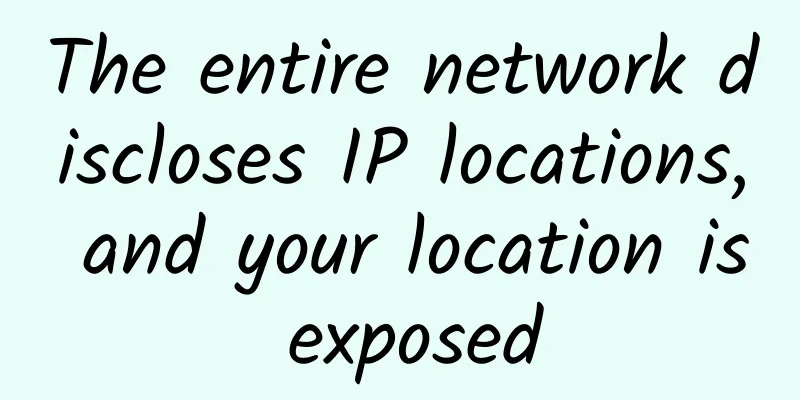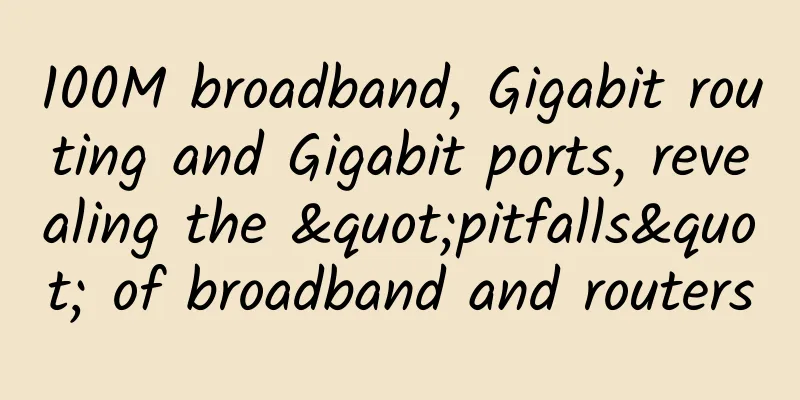Outlook on the Next Generation of Enterprise Wireless Technology - CBRS

|
The shortage of wireless spectrum has always been a problem for countries around the world. Its preciousness is like diamonds in ore. As a global technology leader, the United States will definitely take action in this regard. After years of hard work, the Federal Communications Commission (FCC) finally presented its national broadband plan - Citizen Broadband Radio Service (CBRS). It has not received as much attention as 5G technology and the Internet of Things, but its influence cannot be underestimated. If CBRS is successful, it will alleviate the shortage of wireless spectrum. First Look at CBRSCBRS, Citizens Broadband Radio Services, the name alone makes us feel that this service seems to be closer to ordinary people. To put it simply, CBRS includes the spectrum from 3550MHz to 3700MHz, a total of 150MHz resources, and is managed through a three-layer structure. Since this spectrum is unlicensed (that is, free), major companies are targeting this spectrum. As shown in the figure below, CBRS is on band 48, commonly referred to as dedicated LTE. LTE technology can support two communication modes: FDD (frequency division duplex) and TDD (time division duplex). FDD means that two independent channels are required for data transmission, one channel is used to transmit information downward, and the other channel is used to transmit information upward. TDD transmits and receives signals in different time slots of the same frequency channel, and is separated by a certain guaranteed time. These two modes are essentially the same, with a similarity of 90%. The only difference is the way the channels are used at the physical layer. Pay attention!
How to manage sharing?As mentioned above, the CBRS spectrum is unlicensed, which means that many people can use it. In order to prevent interference between users, CBRS also requires a system to manage spectrum usage, namely the Spectrum Access System (SAS). The CBRS band comes from two LTE bands, namely Band 42 (from 3550 to 3660 MHz) and Band 43 (from 3660 to 3700 MHz). The entire spectrum of Bands 42 and 43 now belongs to CBRS, also known as Band 48. This band is very suitable for services that require ultra-high resources, and it may be an important supplement to the future 5G spectrum. CBRS spectrum sharing rules are divided into three tiers to support public wireless access while also protecting existing users from interference. The three-tier design means that existing Tier 1 services (such as U.S. Navy radars and fixed satellite earth stations) take precedence over the other two categories, starting with Priority Access License (PAL) users and ending with General Authorized Access (GAA) users. Existing military radars and satellite ground stations are protected from interference from the lower two layers. Likewise, PAL licensees are protected from interference from the lower GAA users. The entire system is managed by the Spectrum Access System (SAS). Based on a cloud database of all CBRS devices, including their hierarchy, identification information, location, and other data, SAS performs user management and spectrum sharing, adjusts channel allocation, and prevents interference (see the figure below). SAS allocates channels to CBRS devices and determines their maximum power at each location to ensure that they are not overloaded. It also registers and authenticates devices, communicates with them, resolves frequency band conflicts, receives and processes interference reports, and provides additional interference protection to existing (Level 1) users. Existing detection is done through a system of sensors called ESC (Environmental Sensing Capability) sensors installed adjacent to the Tier-1 layer. CBSD (Citizens Broadband Radio Service Devices) are devices that run on the network. To protect primary users, such as radars, satellites, and some advanced applications, sensors will be deployed near these transmission devices to detect activity on other frequencies. When interference occurs, the sensor notifies the SAS and commands the potential interfering device to change channels (as shown below). The PAL license auctions 100MHz (3550-3650MHz) of the 150MHz spectrum. Each licensee obtains a 10MHz channel in a single "census area". The license is valid for three years, and the number of PAL holdings in each area shall not exceed seven. GAA users can use any part of the total 150MHz spectrum that is not allocated to high-priority users free of charge. The SAS in this figure solves all the problems. It receives interference detection reports from the ESC and commands the device using the CBSD to change channels. There are CBSDs for indoor use (small cells, Class A) and CBSDs for outdoor use that allow higher RF output levels (base stations, Class B). (Source: CBRS Alliance) Where CBRS comes in: Deploying private networksBefore 5G was officially commercialized, Wi-Fi was a common technology used to create private networks. Its rules are relatively free, equipment is easy to obtain, cost-effective, and easy to develop. However, it also has obvious disadvantages compared to commercial LTE wireless networks. For example, the frequency of Wi-Fi used in industry, science, and medical fields is the unlicensed 2.45-5GHz, in addition to many technologies such as Bluetooth or other low-power communication technologies. Even if each user has a mechanism to prevent interference with others, interference is almost inevitable when many people use it together. Wi-Fi was never intended to be used in more than a small range, and its core does not have a relay function. Compared with standard cellular networks, Wi-Fi has lower spectrum utilization and requires several times the number of base stations (Wi-Fi access points) to cover a given area. CBRS allows large companies to run enterprise-level or site-specific applications on employee mobile devices through custom applications, creating a secure private LTE network instead of Wi-Fi. CBRS can also be used to provide full coverage within buildings for various facilities through private networks with specific customized features (such as enhanced security design). In short, due to the special properties of CBRS (the spectrum is unlicensed), private LTE networking becomes feasible, independent of wireless operators, low-cost, and low-complexity. Network owners in need can also purchase FCC-certified equipment, register the equipment, and choose SAS suppliers to configure the network. CBRS can also redefine how distributed antenna systems (DAS) are built and how they are owned. DAS is difficult and expensive to build and manage, and is usually beyond the reach of the average facility manager or other enterprise. CBRS technology makes this application feasible in some places such as concert halls, stadiums, theme parks, shopping malls, hotels and conference centers. This may be more attractive to physical DAS operators than operators. In this case, a neutral host can have multiple private networks, aggregate their traffic, and send it out to the Internet through traditional operators. Tech giants take aim at CBRSAs a competitor to wireless carriers and low-power wide area network (LPWAN) operators, private LTE networks can also serve as an IoT connectivity solution, bringing aggregated data from the "edge" to the "outside world." As a network of IoT devices is built, data from many wireless-enabled sensors is aggregated at the gateway and then sent outward via LPWAN or cellular networks to cloud data servers and finally to the recipient (such as a company control center). In addition, although the opening of the CBRS spectrum has greatly facilitated the construction of private networks, Iyad Tarazi, CEO of Federated Wireless, a major promoter of CBRS networks, said that for most companies, enabling CBRS has always been difficult. Customers often call him to ask about the possibility of building a private network. And they will ask customers in turn: how much do you know about the basics of spectrum, what is the role of the evolved packet core, and everything needed to get their private network up and running, which makes customers speechless. Users are now looking for a "simple connectivity solution" that might be used to support IoT applications: connecting high-definition security cameras or digital signage, for example, or providing a dedicated network for robotics in a factory. Federated Wireless aims to make it easier for enterprises to adopt private networks that leverage the Citizens Broadband Radio Service spectrum by making its new end-to-end CBRS-based managed service available through Amazon Web Services and Microsoft Azure Marketplace. In the case of AWS, customers can adopt 4G/5G private networks with one-click configuration and integration with IoT applications delivered through the AWS Partner Network. Yousef Khalidi, vice president of Microsoft's Azure Networking business, said the combination of Federated's connectivity as a service and Azure's cloud delivery "gives enterprises the flexibility and scale they need to deploy any application into a variety of environments." Not only does Federated Wireless, the leader in CBRS, see the dawn of CBRS for creating private networks, but Inseego is testing how its products work with CommScope's products and is looking to combine the two to sell them to businesses that want to build their own private wireless LTE networks. Inseego builds a variety of portable hotspots, cellular modems, and gateways, including the Skyus 300 router named in the company's FCC filing for industrial IoT applications. Meanwhile, CommScope makes a variety of wireless networking equipment, including equipment for the 3.5GHz CBRS band. It is not surprising that technology giants such as Federated Wireless, Inseego, and CommScope are targeting the private wireless LTE network market. As relevant experts say, three factors work together to make the CBRS private network business opportunities increasingly clear. A wide range of service providers and equipment suppliers have identified private wireless as one of the main growth areas in the cellular market. Enterprises can obtain the value of a large amount of CBRS spectrum capacity, which they can access with a lower threshold (saving the money for spectrum); "huge investments in IoT solutions" developed by companies such as cloud partners; and the automation power brought by technology companies such as AWS and Azure, from cloud-based automation tools to enterprises' need for highly deterministic private internal networks, which have promoted the development of CBRS in the private network field. How to use CBRS to implement private LTE network?To set up CBRS-dedicated LTE, three basic elements are required: Base Station (BS) or wireless gateway, EPC (Evolved Packet Core), and CBRS devices or CPE (Customer Premises Equipment). Base Station (BS) or Wireless Gateway LTE BS for CBRS typically comes with carrier aggregation and multiple advanced features. In order to use Band 48 CBRS, devices requesting service must be authorized by a Spectrum Allocation System (SAS), which can be embedded in the BS or available as a cloud service. The SAS stores license and access information together with the database. Its important task is to analyze the RF spectrum and channels so as not to interfere with existing equipment or PALs. With this approach, the traditional channel interference problem is eliminated. If there is available RF spectrum, the SAS will allocate it to the end user. Pictured below is Lanner’s PGN600 LTE module, which adds full support for both private (LTE CBRS Band 48) and public safety-oriented frequencies.
EPC (Evolved Packet Core) The Evolved Packet Core (EPC) is the framework for delivering converged voice and data on 4G (LTE) networks. 2G and 3G network architectures handle and switch voice and data through two separate subdomains: Circuit Switching (CS) for voice and Packet Switching (PS) for data. The Evolved Packet Core unifies voice and data on the Internet Protocol (IP) service architecture, and voice is treated as just another IP application. This arrangement allows operators to deploy and operate a single packet network for 2G, 3G, WLAN, WiMAX, LTE, and fixed access (Ethernet, DSL, Cable, and Fiber). EPC is the main controller and central brain of the LTE network, usually running in the NOC of an enterprise or ISP.EPC is usually deployed locally, but hybrid and cloud deployment of EPC can be seen in the future. The dedicated LTE-EPC is responsible for:
CBRS Devices or CPE (Customer Premises Equipment) This device provides the radio connection to the LTE base station and must support LTE band 48. This is the user equipment that provides the interface to the end user. CPE can be anything, and with the rise of IoT, we will also see sensors that support CBRS. Private LTE is future-oriented. Although the advantages of CBRS are obvious, the design and deployment of the network must be customized for each business. Therefore, it can be said that private LTE and Wi-Fi are complementary, and enterprises should fully and effectively utilize the capabilities of each technology. Research Progress of CBRSGiven the early days of CBRS and the potential financial incentives, there are many challenges that need to be faced and overcome. As mentioned earlier, there are very few LTE modems that support CBRS. Qualcomm's Snapdragon X20 Gigabit LTE modem was the first, and Federated Wireless' spectrum controller was introduced at the same time. However, the development process requires a lot of components, such as Nokia's wireless radio equipment, and components from other manufacturers. Comprehensive testing of CBRS began in the second half of 2016. In 2017, Nokia, Qualcomm, and Alphabet (the company after Google's reorganization) used CBRS to transmit 360° 4K video on a high-speed racing car at the Las Vegas Motor Speedway in January. The video was streamed in real time using YouTube Live Events. In August of the same year, Verizon Ericsson, Qualcomm, and Federated Wireless demonstrated the application scenario of CBRS in the LTE Advanced Carrier Aggregation Solution for the first time. In September 2019, the Wireless Telecommunications Bureau (WTB) and Office of Engineering and Technology (OET) of the Federal Communications Commission (FCC) issued an announcement stating that the Spectrum Access System (SAS) operated by Google, Federated Wireless, CommScope, Amdocs and Sony had passed the Commission’s SAS laboratory testing requirements and received approval for Initial Commercial Deployment (ICD) of CBRS. In February 2020, the CBRS Alliance, an industry group for commercialization and adoption, announced the completion of specifications to support specific OnGo configurations for 5G New Radio (5G NR). The FCC authorized full commercial deployment in the CBRS band in January 2020, and with the CBRS Alliance Version 3 solution supporting 5G deployment using 3.5 GHz shared spectrum, the market for OnGo services and solutions is expanding rapidly. Cable company Midco plans to use 3.5GHz technology to extend its current cable coverage. They have already tested 3.5GHz using SAS. Some end-user CPEs already support the technology. Smartphones like the Samsung Galaxy S10, iPhone 11 Pro, and iPhone 11 Pro Max already support CBRS Band 48. The regulatory and technical road to opening up the 3.5 GHz Citizens Broadband Radio Service band is long and sometimes difficult to navigate. But there are a number of clear strategies to make CBRS work. For operators, chief among them is the use of advanced carrier aggregation capabilities on the RAN and devices to use 3.5 GHz to enhance existing network capacity and improve network experience. This is another opportunity for cable companies seeking to expand mobile service coverage and reduce their reliance on Tier 1 operator MVNOs. CBRS opens up new ways to provide fixed wireless access and can serve as a launch pad for new entrants such as WISPs (wireless LAN operators). Operators also have the opportunity to solve indoor coverage problems in large public venues or sell private network type services to businesses such as manufacturing. Of course, this is just the tip of the iceberg. Many people initially called 3.5 GHz the "innovation band" and expected major innovations to come with the commercialization of CBRS. |
Recommend
CloudSilk VPS in Tokyo, Japan is now online, with annual payment of CMI for three-network backhaul starting from 360 yuan
CloudSilk has launched a VPS host in Tokyo, Japan...
This article explains OSPF clearly.
[[426836]] OSPF OSPF is an IGP and a Link-State p...
How 5G will shape the future of construction
5G is an enabler that will deliver new capabiliti...
What is a VPN and why is it important for SD-WAN?
Internet-based virtual private networks (VPNs) we...
A two-way communication without IP confirmation via Udp
Preface UDP is an unreliable communication, but i...
Understand fiber-based LAN architecture
A local area network (LAN) is a computer network ...
If you don’t know IPv6, you are out of date. What is IPv6?
When using mobile apps, have you noticed that the...
2018 China Enterprise Digital Transformation Seminar was held, Ruijie helped enterprises break through digital transformation
On August 24, the 2018 China Enterprise Digital T...
RAKsmart Double 11: San Jose servers start at $30, new users get $10 for registration, 1-10Gbps unlimited traffic servers
RAKsmart is an early-established foreign hosting ...
Summary information: Casbay/98 Cloud/Asia Cloud/Journey Cloud/PUAEX
I will continue to share some of the merchant sub...
How will 5G mainstreaming affect the Internet of Things in 2023?
The number of Internet of Things (IoT) endpoints ...
Amazing, TCP/IP service protocol, network topology summary
Network topology (Tpology) Topology refers to the...
Mobile device management in the new era of 5G LAN
The emergence and innovation of enterprise-specif...
Top 5 Internet Trends for 2020
Top networking trends for the coming year include...









